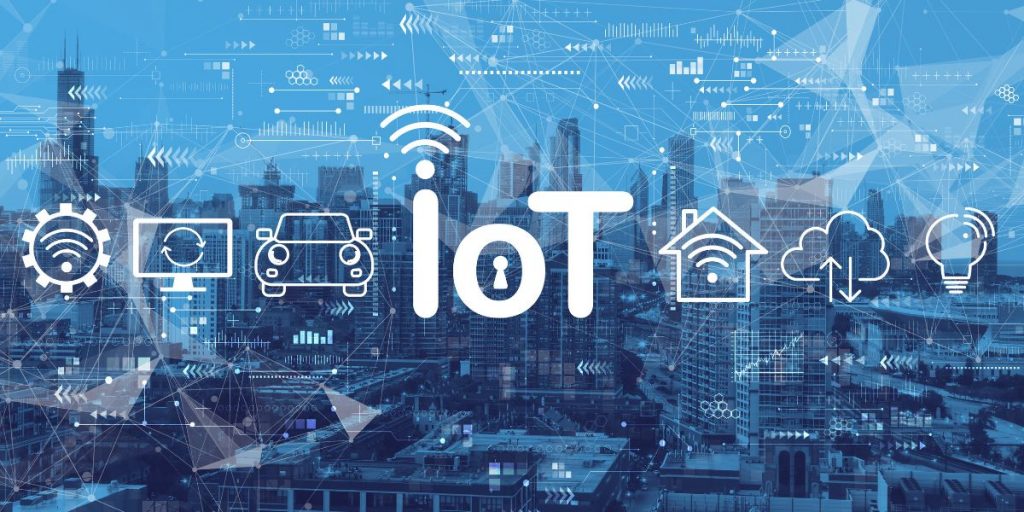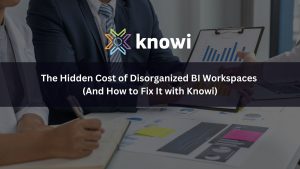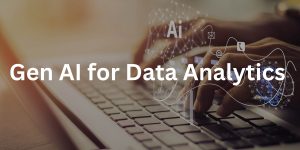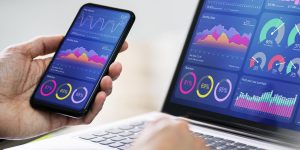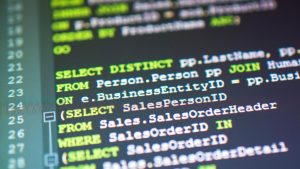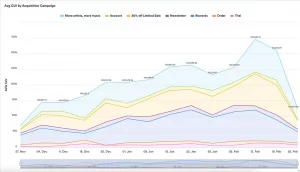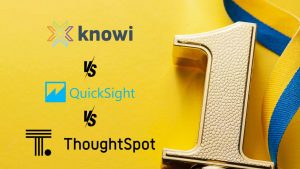IoT Analytics: Overview, challenges and implementation
The Internet of Things (IoT) has emerged as a revolutionary force, reshaping the way we interact with the world around us. IoT represents the interconnectedness of everyday objects and devices through the internet. These “smart” objects are embedded with sensors, software, and network connectivity, allowing them to collect and exchange data with other devices and systems. The result? A vast ecosystem of intelligent, data-driven devices that enhance our lives in ways we might not even realize. IoT is set to dominate the business landscape and beyond with the IoT market worldwide, worth about 182 billion U.S. dollars in 2020, set to soar to a whooping 621 billion U.S. dollars by 2030, tripling its revenue in ten years. What’s more, Statista in their IoT global annual revenue 2020-2030 published in 2023, predicts the number of IoT connected devices worldwide will also triple during this same timeframe.
What is IOT Analytics
IoT Analytics is the systematic process of collecting, processing, and interpreting the vast amounts of data generated by IoT devices. Through this process organizations can derive meaningful insights and drive actionable outcomes. Not confined to a single industry; IoT analytics capabilities span a wide range of sectors and continues to expand as organizations discover new ways to leverage the data generated by IoT devices. Some sectors already seeing the benefits of IoT Analytics include:
- Manufacturing – In the manufacturing sector, IoT Analytics optimizes production processes, monitors equipment health, and predicts maintenance needs. This results in increased efficiency, reduced downtime, and cost savings.
- Healthcare – IoT Analytics plays a vital role in remote patient monitoring, drug discovery, and healthcare operations optimization. It enables healthcare providers to deliver more personalized care and improve patient outcomes.
- Retail – In the retail industry, IoT Analytics helps businesses understand customer behavior, optimize inventory management, and enhance the shopping experience through personalized recommendations and targeted marketing.
- Agriculture – Precision agriculture relies heavily on IoT Analytics to monitor crop conditions, manage resources efficiently, and maximize yields while minimizing environmental impact.
- Smart Cities – Municipalities around the world are using IoT Analytics to improve urban planning, traffic management, waste collection, and public safety. It makes cities more efficient and enhances the quality of life for residents.
- Energy – The energy sector benefits from IoT Analytics by optimizing energy production, distribution, and consumption. It aids in reducing energy wastage and promoting sustainability.
- Transportation and Logistics – IoT Analytics enhances route optimization, fleet management, and supply chain visibility, resulting in reduced transportation costs and improved delivery efficiency.
Why Use IoT Analytics?
The use of IoT devices has ushered in an era of unprecedented data generation. This surge in data volume, velocity, and complexity is driving the need for robust IoT Analytics to manage the deluge of data that IoT devices produce.
Moreover, the real-time nature of IoT data necessitates rapid decision-making. IoT Analytics empowers organizations to process and analyze data as it’s generated, enabling timely responses and actions. IoT data often arrives in various formats from diverse sources, making data integration and cohesiveness a challenge. IoT Analytics platforms are designed to effectively handle this complexity.
IoT Analytics goes beyond data organization and processing. It leverages advanced analytics, including machine learning, to identify patterns and anomalies within the data. This capability enables organizations to make predictive decisions, offering a proactive approach rather than a reactive one. Furthermore, by optimizing processes and resource allocation, IoT Analytics helps reduce operational costs and enhance overall efficiency.
What Are the Types of IoT Analytics?
IoT Analytics encompasses four primary types, each serving a distinct purpose in deriving insights and value from IoT data:
- Descriptive Analytics – This fundamental type of IoT Analytics focuses on summarizing historical data to provide a clear understanding of past events and trends within an IoT ecosystem. By visualizing and reporting on data, organizations gain insights into what has transpired, helping them make informed decisions based on historical patterns.
- Diagnostic Analytics – Diagnostic analytics goes a step further by using historical data to uncover the causes and reasons behind specific events or anomalies. It helps answer the critical question, “Why did it happen?” This type is essential for identifying root causes, troubleshooting issues, and improving overall system reliability.
- Predictive Analytics – Predictive analytics leverages advanced statistical algorithms and machine learning to forecast future trends and events based on historical data. By analyzing patterns and correlations, predictive analytics enables organizations to anticipate potential issues or opportunities, allowing for proactive decision-making and risk mitigation.
- Prescriptive Analytics – Building on predictive analytics, prescriptive analytics not only predicts future outcomes but also offers recommendations on the best actions to take to optimize those outcomes. It provides actionable insights, suggesting the most effective courses of action to achieve desired goals. This type of analytics is invaluable for real-time decision support and process optimization.
Ultimately, IoT analytics empower organizations to maximize the value of IoT data and drive informed decisions, efficiency, and innovation.
How is IoT Analytics Different from Traditional Analytics?
IoT Analytics stands apart from traditional analytics primarily due to the unique characteristics of IoT data sources. Unlike traditional analytics, IoT Analytics deals with vast volumes of data generated by IoT devices at high velocities, often in real-time. This continuous data influx requires real-time or near-real-time processing to extract timely insights. Moreover, IoT data can be highly varied, including structured, semi-structured, and unstructured data types, such as sensor readings, text data, images, and more, which complicates data integration and analysis. IoT devices themselves also come from various manufacturers and may employ different communication protocols, creating challenges in data interoperability and integration.
Additionally, IoT Analytics often relies on streaming analytics to process data as it’s generated, enabling immediate insights and actions, while traditional analytics frequently uses batch processing. Scalability is crucial in IoT Analytics to handle the rapid expansion in use of IoT devices, and edge processing—analyzing data on the device or at the network edge—is often essential to reduce latency and manage data effectively.
What are some common IOT Data management Issues?
IoT data poses several unique challenges with some of the most common being:
- Data Volume and Scalability – IoT devices generate enormous volumes of data, overwhelming traditional data management systems. Scalability challenges arise when handling the rapid growth in the number of devices and data streams.
- Data Quality and Integrity – IoT data can be noisy, incomplete, or inconsistent due to sensor inaccuracies or transmission issues. Ensuring data quality and integrity is critical for reliable analytics and decision-making.
- Data Security and Privacy – IoT devices transmit sensitive data, making security a paramount concern. Data encryption, access control, and secure communication protocols are essential to protect IoT data from cyber threats and breaches.
- Data Storage and Retention – Storing massive amounts of IoT data cost-effectively and ensuring timely retrieval for analysis is challenging. Organizations need to balance storage costs with data accessibility and retention policies.
- Data Interoperability – IoT ecosystems comprise diverse devices and protocols, leading to data interoperability issues. Standardization efforts are ongoing to address this challenge and enable seamless data integration.
- Real-time Processing – Many IoT applications require real-time data processing and immediate action. Delays in data processing can impact the effectiveness of IoT solutions, especially in time-critical scenarios.
- Energy Efficiency – IoT devices often operate with limited power resources. Efficient data management strategies are necessary to minimize energy consumption and prolong device lifespan.
- Edge Computing – Processing data at the edge of the network, closer to IoT devices, reduces latency and conserves bandwidth. However, managing data processing at the edge introduces complexities in distributing and aggregating data.
- Data Governance and Compliance – Compliance with data regulations, such as GDPR, HIPAA, or industry-specific standards, is crucial. Organizations must implement data governance practices to ensure legal and ethical IoT data handling.
- Data Analytics and Insights – Extracting meaningful insights from IoT data can be challenging due to its volume and complexity. Effective analytics tools and techniques are required to uncover actionable information.
Addressing these common IoT data management issues requires a holistic approach, encompassing technology, processes, and policies.
How Knowi Can Help to Overcome the Challenges of IoT Analytics
Knowi is at the forefront of a new generation of analytics platforms purpose-built to tackle the unique challenges posed by IoT analytics. Standing out as a versatile solution with several key advantages, Knowi excels in handling multi-structured data. This flexibility ensures that organizations can effectively manage the huge diversity of IoT data sources. Knowi also seamlessly connects to IoT data stored in NoSQL databases such as Cassandra, Elasticsearch, InfluxDB, as well as through REST APIs and various file formats like CSV and JSON. This feature ensures that users can effortlessly access and integrate their IoT data, regardless of its source or format. Another standout feature is Knowi’s ability to streamline the data discovery process. Users can rapidly discover IoT data, enrich it with relevant business context by joining it with relational data and create meaningful visualizations within minutes. This efficiency empowers organizations to quickly extract valuable insights from their IoT data. Moreover, Knowi serves as a unified business analytics platform, offering a centralized hub for data analysis, visualization, and reporting which is readily scalable to align with business needs as they grow and evolve. This feature simplifies the delivery of embeddable analytics on IoT data, making it easier for users to access real-time insights within their IoT applications and solutions, as well as grow their insights.
With Knowi, IoT analytics becomes more accessible, efficient, and powerful, enabling organizations to make the most of their IoT investments.
Business Use Cases of IoT Analytics
IoT analytics has opened up a world of possibilities across various industries, revolutionizing the way businesses operate and make decisions. Here are some examples that showcase its transformative potential:
- Fleet Management – Consider a logistics company that relies on a vast fleet of vehicles to deliver goods. IoT analytics allows them to monitor vehicle health in real-time, track driver behavior, and optimize routes. This leads to reduced fuel consumption, lower maintenance costs, and faster deliveries.
- Traffic Management for Smart Cities – IoT analytics plays a pivotal role in alleviating traffic congestion. By analyzing real-time data from sensors and cameras, traffic signals can be optimized, reducing traffic jams and improving road safety.
- Smart Agriculture – In the agricultural sector, IoT analytics provides invaluable insights into crop health, soil conditions, and weather patterns. Farmers can make data-driven decisions to maximize crop yields while conserving precious resources.
- Restocking of Supplies – Imagine a retail giant with numerous stores. IoT analytics helps monitor inventory levels in real-time. When stock levels dip below preset thresholds, automated alerts trigger restocking orders, ensuring that products are always available to customers.
- Predictive Maintenance – In the manufacturing sector, IoT analytics is a game-changer for equipment maintenance. By analyzing data from sensors, predictive maintenance schedules can be created, minimizing unplanned downtime and saving on maintenance costs.
- Energy Management – IoT analytics plays a significant role in optimizing energy consumption. Buildings and industrial facilities can monitor and control devices in real-time, resulting in reduced energy waste and lower operational costs.
- Geo-spatial Surveillance Analysis – Security and surveillance benefit from IoT analytics. Data from cameras, drones, and sensors are analyzed to detect anomalies and security threats across large areas, critical infrastructure, and public spaces.
- Healthcare Monitoring – In the healthcare sector, IoT analytics enables remote patient monitoring. Healthcare providers can track patient data in real-time, facilitating early intervention and personalized care.
- Environmental Monitoring – Environmental scientists use IoT analytics to monitor air quality, water quality, and climate conditions. It aids in assessing environmental impact and planning conservation efforts.
- Retail Analytics – In the world of retail, IoT analytics analyzes customer behavior, foot traffic, and inventory data. This helps retailers enhance the shopping experience, optimize store layouts, and tailor marketing campaigns.
- Waste Management – In the realm of smart waste management, IoT analytics optimizes trash collection routes based on fill-level data from bins. This results in cost savings and a reduced environmental footprint.
These real-world examples demonstrate how IoT analytics is making a substantial impact across various industries. By seamlessly integrating IoT data and analytics, organizations can uncover valuable insights, make informed decisions, and drive innovation, ultimately improving their operations and customer experiences.
Knowi IoT Analytics Case Studies
Here are two compelling case studies that showcase how Knowi’s IoT Analytics solutions have successfully addressed intricate challenges in the domains of energy management and traffic control. These real-world examples illustrate how Knowi’s capabilities can make a transformative difference in tackling complex issues across diverse industries.
Unlock the Power of IoT Analytics with Knowi
From managing data volume, ensuring data quality and real-time processing to addressing security concerns and adhering to compliance standards, IoT Analytics has multifaceted opportunities as well as challenges. And that’s where Knowi comes in! Emerging as a leading solution, seamlessly handling multi-structured data, enabling real-time connectivity, simplifying data discovery, and ensuring scalability, Knowi is your trusted partner in maximizing insights and driving actionable outcomes.
Don’t miss out on the opportunity to elevate your decision-making and operations with Knowi’s IoT Analytics expertise. Book a demo with Knowi today and embark on a journey toward data-driven success. Witness firsthand how Knowi can revolutionize your organization.
